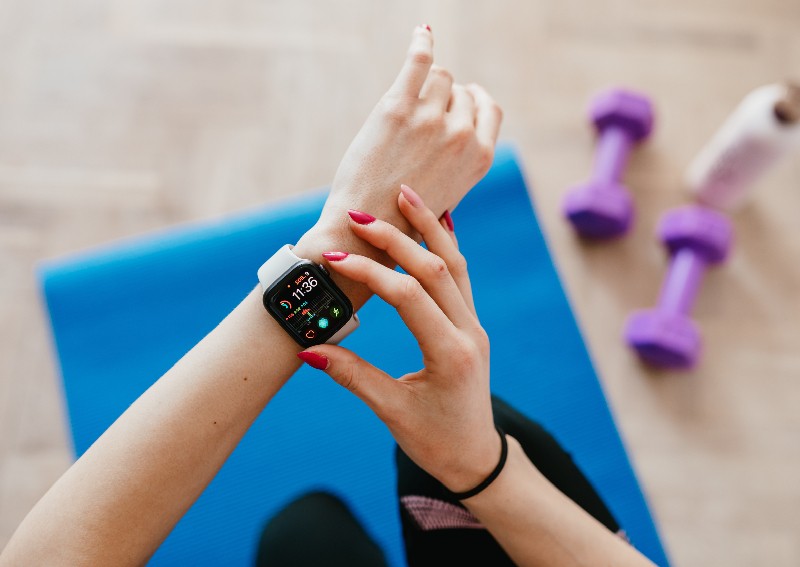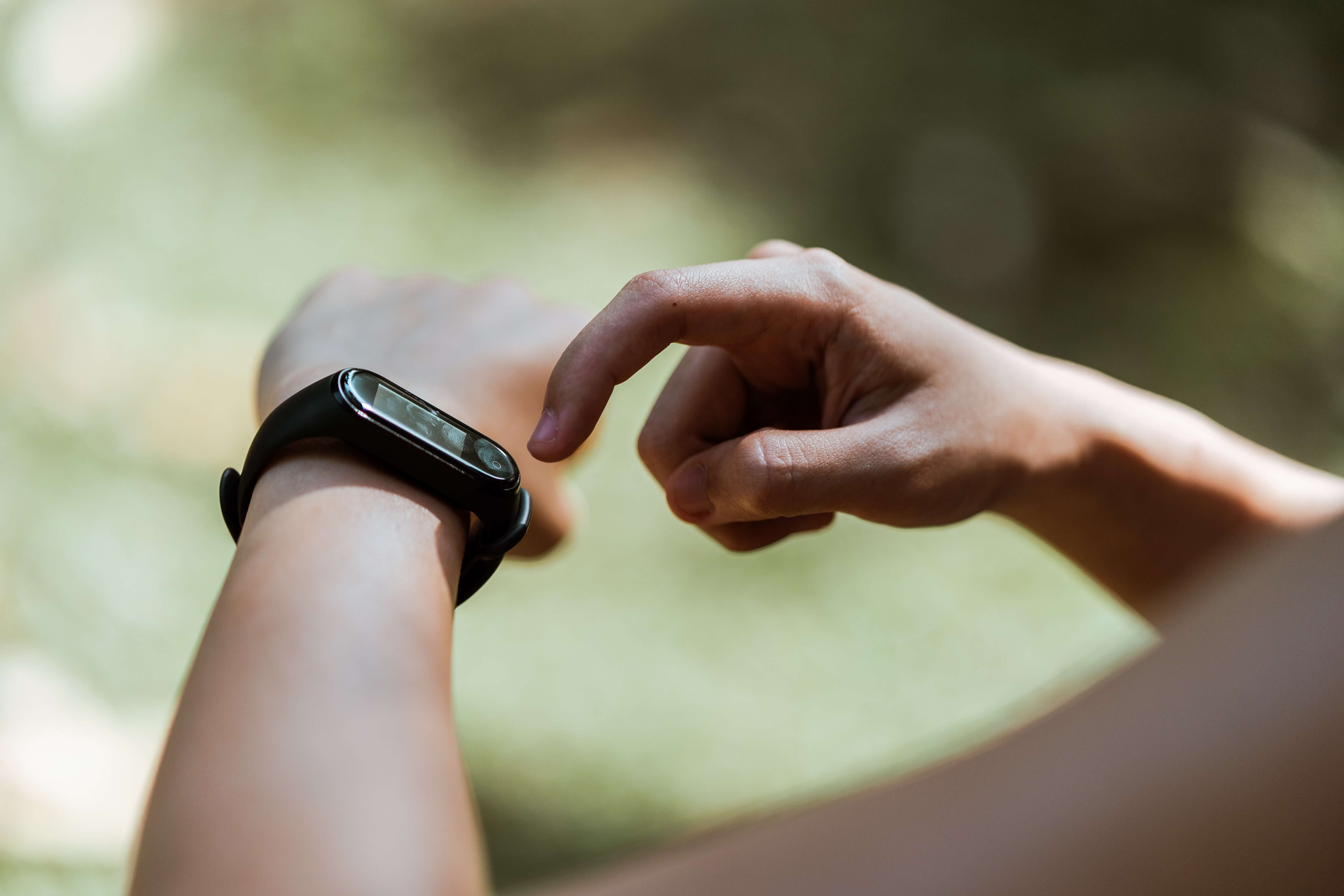Smartwatch vs fitness tracker: Which is worth your money?

The wearables industry’s performance has been surging ever since the Apple Watch’s introduction five years ago. The industry frontrunner’s 2019 iteration saw 7.6 million units shipped in the first quarter of 2020 alone.
As a whole, the sector’s performance isn’t shabby either, with American tech MNC Cisco predicting that 500 billion of these devices will be connected to the Internet by 2030.
It’s no surprise that wearables are selling so well, given how easy it is to integrate them into our lives. With a miniature display and few buttons (if any at all), operating a smartwatch or fitness tracker is a breeze.
This rings especially true for the latter device, which can track your entire exercise routine, calories burned, and heart rate with a single push of a button. This is a godsend for Singaporeans, who are becoming increasingly fitness-savvy and want to gain more out of their workouts.
At this point, you’re probably thinking: don’t smartwatches already have these features and more? Well, it isn’t as simple as that. Fitness trackers are still going strong, even experiencing a 32 per cent growth in shipments from 2018 to 2019.
The following list details some key nuances that prevent the two devices from becoming a single category.
| Smartwatch | Fitness Tracker | |
| Features | More general; to support daily activities like listening to music, taking calls, etc. | Greater focus on health and fitness. These include tracking calories burned, athletic performance, etc. |
| Battery life | Poor due to limitations of battery technology and increasingly advanced features in smartwatches. | Much more longevity than smartwatches due to their stripped-down design. Some can last a year on a full charge. |
| Price | Generally more expensive. For example, $419 for the Apple Watch SE. | Generally cheaper. For example, $168 for the Fitbit Inspire 2. |
| Size | Usually larger and bulkier due to the display and internal components. | Often slimmer and lighter because of a simplified display and internal components. |
| Versatility | More versatile because they are targeted at a wide consumer base. | More focus on health and fitness due to their lightweight design and feature set. |
Smartwatches are usually more feature-rich, acting as a techie’s Swiss Army knife. They have your trusty old date and time functions, along with some nifty ones that improve your quality of life. These include acting as the shutter or remote for your smartphone’s camera and music apps respectively.

On the other hand, fitness trackers have a more focused application. Their features are geared towards athletes or health-conscious individuals who are looking for as much health and fitness data as possible.
These include basic statistics such as steps taken and distance travelled in a day. For higher-end fitness trackers, more in-depth variables such as calories burned, sleep quality, and heart rate can be measured.
Fitness trackers usually sport a better battery life compared to smartwatches, especially for more stripped down models with simple LED displays.

Newer fitness trackers can last up to a full year on a single charge while not compromising on any of the features that gym rats find essential. That’s a lifesaver considering the plethora of devices you already have to charge daily.
Smartwatches have a poorer battery life thanks to their added functionality and larger displays. Compounding the problem would be that battery technology has not advanced that much, especially in such a small package.
Charging technology, on the other hand, is a different ball game. With fast chargers, wireless charging capabilities, and smartphones doubling up as backup power banks, smartwatches aren’t really at a disadvantage here.
Smartwatches are usually heftier than fitness trackers in two ways. Firstly, they are bulkier due to more internal components being packed into the case along with a (usually) larger display. Secondly, they are heavier because of said internal components.
These include various sensors, the motherboard, and CPU. The increased size and weight are the side effects of a smartwatch’s added functionality.
For example, Apple’s entry level Apple Watch SE weighs 36.4g whereas Fitbit’s basic Inspire 2 fitness tracker weighs 30g. Fitness trackers are engineered to be as light as possible due to their applications in sports and athletics.
Some of these devices can be as light as 10g. For reference, that’s lighter than one tablespoon of sugar.
Smartwatches are more versatile, especially as wearable technology continues to improve by leaps and bounds. These gadgets are starting to give fitness trackers a run for their money by packing increasingly advanced health-tracking features.
Apple debuted its pioneering FDA-approved ECG feature in the Apple Watch Series 4 two years ago and this year’s Apple Watch Series 6 comes bundled with blood oxygen monitoring capabilities.

Fitness trackers are laser-focused in nature, as mentioned earlier. They deliver health and fitness data as accurately as possible for professional and recreational athletes to aid them in maintaining or improving their performance.
Although they don’t sport many quality-of-life-esque features, the ones they do have are a boon if you work out frequently. However, they have not been resting on their laurels, becoming increasingly advanced by losing weight, packing better water resistance, and offering tracking support across a wide variety of sports.
Smartwatches are usually more expensive thanks to their richer feature set and better displays. For example, the aforementioned Apple Watch SE costs $419 whereas the Fitbit’s Inspire 2 goes for less than half of that at $168. However, value is a different thing altogether.
When comparison shopping, you need to scrutinise each wearable’s specifications and feature list to determine whether you’re getting your money’s worth. You also need to understand whether said wearable fits your lifestyle.
For instance, you probably don’t need an Oura Ring’s highly accurate sleep tracking if you already wake up feeling fresh every day. Neither do you need a feature-packed fitness tracker if you aren’t the most active individual.

If you’re looking for a device that’ll take you from the MRT to the TRX, go for a smartwatch. In exchange for a higher price and shorter battery life, you have a wearable that can tackle almost anything life throws at it.
From showing important notifications sent to your smartphone to tracking your heart rate after an intense workout, the smartwatch is a do-it-all device.
Conversely, if you just need a gadget that can keep up with your exercise routines and athletic feats, a fitness tracker is right up your alley. You benefit from a longer battery life, a lower price, comprehensive performance tracking, and for top-of-the-line models, performance analysis specifically for sports.
Whether you’re an avid biker, runner, or swimmer, you’re sure to benefit from a fitness tracker.
This article was first published in SingSaver.com.sg.